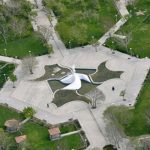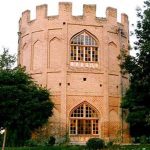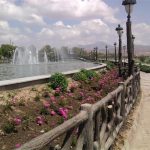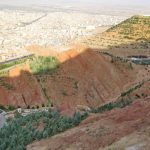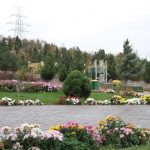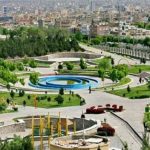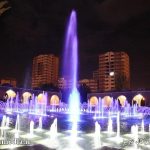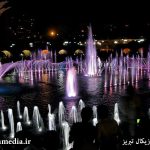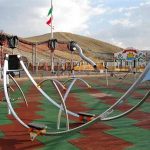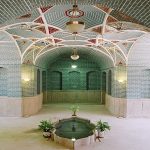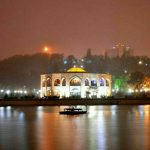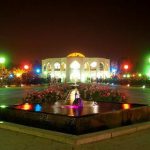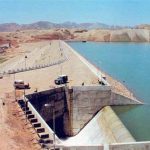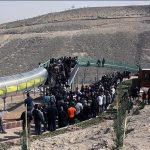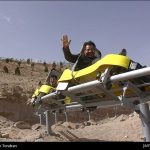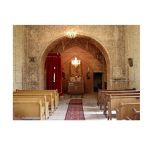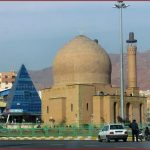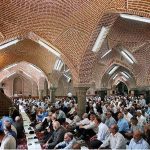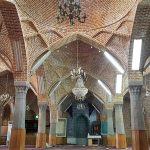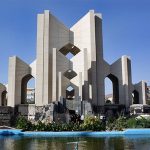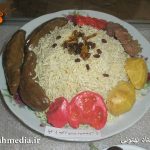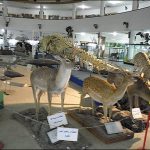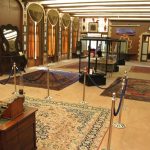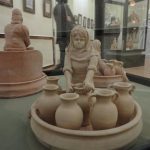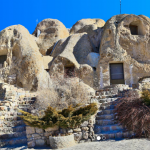TABRIZ
TABRIZ COUNTY HISTORY
Tabriz

Tabriz (pronounced [tæbˈriːz] ( listen)) (Persian: تبریز, Azerbaijani: تبریز) is the most populated city in Iranian Azerbaijan, one of the historical capitals of Iran and the present capital of East Azerbaijan province. Located in the Quru River valley, between long ridges of volcanic cones in the Sahand and Eynali mountains, Tabriz’s elevation ranges between 1,350 and 1,600 metres (4,430 and 5,250 ft) above sea level. The valley opens up into a plain that gently slopes down to the eastern shores of Lake Urmia, 60 kilometres (37 miles) to the west. With cold winters and temperate summers, Tabriz is considered a summer resort. It was named World Carpet Weaving City by the World Crafts Council in October 2015[3]and Exemplary Tourist City of 2018 by the Organisation of Islamic Cooperation.
With a population of over 1.73 million (2016),[6] Tabriz is the largest economic hub and metropolitan area in Northwest Iran. The population is overwhelmingly Azerbaijani, though Persian is spoken by residents as a second language.Tabriz is a major heavy industries hub for automobiles, machine tools, refineries, petrochemicals, textiles and cement production industries.[8] The city is famous for its handicrafts, including hand-woven rugs and jewellery. Local confectionery, chocolate, dried nuts and traditional Tabrizi food are recognised throughout Iran as some of the best. Tabriz is also an academic hub and a site for some of the most prestigious cultural institutes in Northwest Iran.
Tabriz contains many historical monuments, representing Iran’s architectural transition throughout its deep history. Most of Tabriz’s preserved historical sites belong to Ilkhanid, Safavid and Qajar. Among these is the grand Bazaar of Tabriz, inscribed as a World Heritage Site in 2010. From the early modern era, Tabriz was pivotal in the development, movement and economy of three neighbouring regions; namely the Caucasus, Eastern Anatolia and Central Iran. From the 19th century, it became the most important city in the country in many respects. As Iran’s closest hub to Europe, many aspects of early modernisation in Iran began in Tabriz. Prior to forced ceding of Iran’s Caucasian territories to Imperial Russia, following two Russo-Persian Wars in the first half of the 19th century, Tabriz was at the forefront of Iranian rule over its Caucasian territories due to proximity. Throughout most of the Qajar period (up to 1925), it functioned as the seat of the crown prince.
Early history
The early history of Tabriz is not well-documented. The earliest inscription about Tabriz, referring to the city as Tarui or Tauris, is on the Assyrian King Sargon II’s epigraph in 714 BC. Tabriz has been chosen as the capital for some rulers commencing from Atropates era and his dynasty.
A recent excavation at the site of the Iron Age museum, in the north of the Blue Mosque site, uncovered a graveyard of 1st millennium BC. More likely the city has been destroyed multiple times either by natural disasters or by the invading armies.
The earliest elements of the present Tabriz are claimed to be built either at the time of the early Sassanids in the 3rd or 4th century AD, or later in the 7th century. The Middle Persian name of the city was T’awrēš.
Egyptologist David Rohl suggested that the legendary Garden of Eden was near Tabriz. Archaeologist Eric H. Clinecommented on Rohl’s views, writing that “his suggestions have not caught on with the scholarly establishment. His argument is not helped by the fact that it depends upon speculations regarding the transmission of place-names for both the various rivers and nearby related areas from antiquity to the present. In the end, while Rohl’s suggestion is not out of the question, it seems no more probable than any other hypothesis, and less likely than those suggested by Speiser, Zarins, and Sauer.”
From the Arab conquest to the Constitutional Revolution
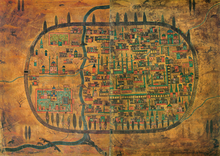
16th-century schematic map of Tabriz by Matrakçı Nasuh
After the Muslims conquest of Iran, the Arabic Azd tribe from Yemen resided in Tabriz. The development of post-Islamic Tabriz began as of this time. The Islamic geographer Yaqut al-Hamawi says that Tabriz was a village before Rawwad from the tribe of Azd arrive at Tabriz. In 791 AD, Zubaidah, the wife of Abbasid caliph Harun al-Rashid, rebuilt Tabriz after a devastating earthquake and beautified the city so much as to obtain the credit for having been its founder.
In the ramadan of 1208, Tabriz, as well as its adjacent cities and territories were conquered by the Kingdom of Georgia under Tamar the Great, as a response to the massacre of 12,000 Christians in the Georgian-controlled city of Ani on Easter day by Muslims. In nearby Ardebil, conquered by the Georgians as well, as many as 12,000 Muslims were killed.[26] The Georgians then pushed further, taking Khoy and Qazvin along the way.
After the Mongol invasion, Tabriz came to eclipse Maragheh as the later Ilkhanid Mongol capital of Azerbaijan until it was sacked by Timur in 1392.
Chosen as a capital by Abaqa Khan, fourth ruler of the Ilkhanate, for its favored location in the northwestern grasslands,[30]in 1295, his successor Ghazan Khan made it the chief administrative center of an empire stretching from Anatolia to the Oxus River and from the Caucasus to the Indian Ocean. Under his rule new walls were built around the city, and numerous public buildings, educational facilities, and caravansarais were erected to serve traders traveling on the ancient Silk Road. The Byzantine Gregory Choniades is said to have served as the city’s Orthodox bishop during this time.[citation needed]
In the 13th century many western expediters who visit Tabriz on their way to the east were amazed by the richness of the city, its magnificent buildings and its institutions.
Marco Polo, who traveled thorough the Silk Road and passed Tabriz about 1275, described it as: “a great city surrounded by beautiful and pleasant gardens. It is excellently situated so the goods brought to here come from many regions. Latin merchants specially Genevis go there to buy the goods that come from foreign lands.”
During the Middle Ages, a Jewish community existed in the town. In the 16th century a Jewish Yemenite traveler to the town described the deteriorating conditions of Jewish life there.
From 1375 to 1468, Tabriz was the capital of Qara Qoyunlu state in Azerbaijan, until defeat of Qara Qoyunlu ruler, Jahan Shah by Ag Qoyunlu warriors. Ag Qoyunlus selected Tabriz as their capital from 1469 to 1501. Some of the existing historical monuments including the Blue Mosque belong to the Qara Qoyunlu period.
In 1501, Shah Ismail I entered Tabriz and proclaimed it the capital of his Safavid state. In 1514, after the Battle of Chaldiran, Tabriz was temporarily occupied by the Ottomans. Tabriz retaken by Iranian forces and it remained the capital of Safavid Iranian empire until 1548. In that year Shah Tahmasp I transferred it to Qazvin to avoid the growing threat of Ottoman army to his capital.

Between 1585 and 1603, Tabriz was under occupation by Ottomans. Safavid king, Abbas I of Persia retake Tabriz after which the city grows as a major commerce center, conducting trade with the Ottoman Empire, Russia, and the Caucasus.[35] The City was occupied and sacked by Ottoman Murad IV in 1635, during the Ottoman-Safavid war 1623-1639, before being returned to Persia in the Treaty of Zohab in 1639.
In summer of 1721, a large earthquake shocked Tabriz, killing about eighty thousand of its residents. The devastation continued on 1724-1725 by a crucial invasion of the city by Ottoman army. During this round of invasion Ottmans imprisoned many and killed about two hundred thousand of Tabriz inhabitants.[36] Tabriz retaken by the Iranian army. In the years after retaking a widespread hunger combined with spread of fatal diseases killed some more of the remaining residents of the city. In 1780, a major earthquake hit near Tabriz killing over 200,000 people.[37] The tragic devastation reduced the number of inhabitants to about thirty thousand and turned the city to a mere ghost town.
In recent years, Tabriz is much more stable and the new developments in the city are rapidly changing the face of the city.
Capital of Iran
Tabriz was chosen as the capital by several rulers commencing from the time of Atropates. It was the capital of the Ilkhanate (Mongol) dynasty since 1265. During the Ghazan Khan era, who came into power in 1295, the city reached its highest splendour. The later realm stretched from the Amu Darya in the East to the Egypt borders in the West and from the Caucasus in the North to the Indian Ocean in the South.[48] It was again the capital of Iran during the Qara Qoyunlu dynasty from 1375 to 1468 and then during the Ag Qoyunlu within 1468–1501. Finally, it was capital of the Iranian Empire in the Safavid period from 1501 until their defeat in 1555.[49]
During the Qajar dynasty, Tabriz was used as residence center of Iranian Crown Prince (1794–1925).
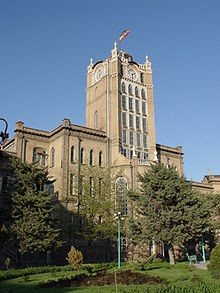
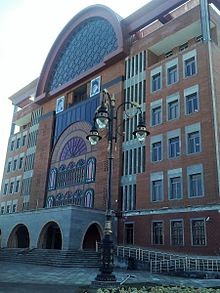
Further information: List of Tabriz Mayors
had consulate offices in Tabriz. The US consulate office closed after the 1979 Islamic revolution and the USSR’s office closed after the collapse of the USSR in 1991.
Panoramic view
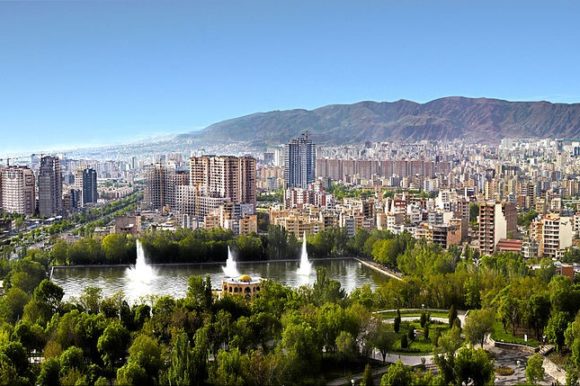
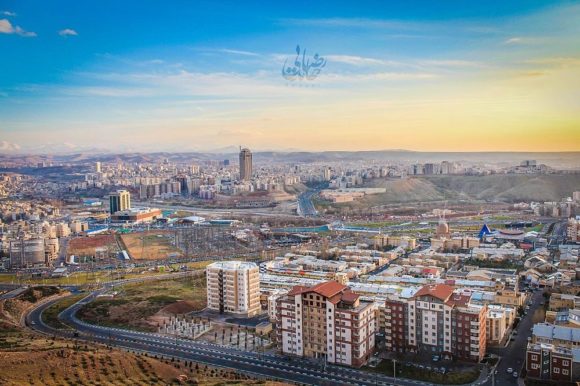
|
|
|
| -18(°C) | |
| Wind | (mph) |
| Pressure | (in) |
| Visibility | (mi) |
| UV Index | - |
| Humidity | (in) |

